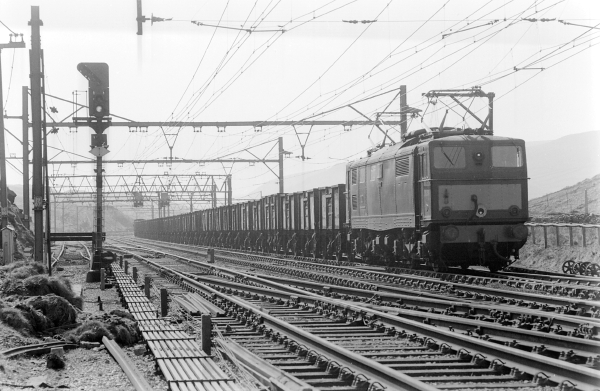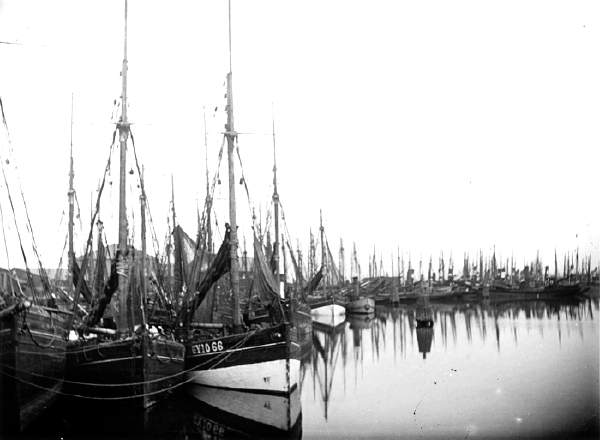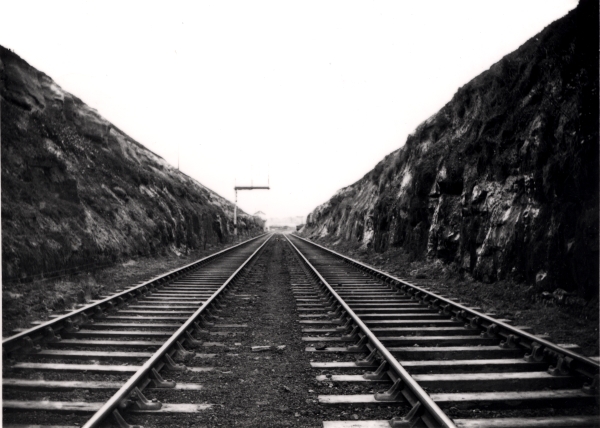With the new Woodhead Tunnel complete, the fully modernised Manchester to Sheffield line was opened throughout in 1954, although a short stretch had opened two years earlier. Using a 1,500 volts dc supply and new locomotives built by British Railways at Gorton, Britain's first overhead-electrified main line was bound to be a success. This was partially true as the coal traffic began to run much more freely than it had done previously. However, passenger traffic would only last for sixteen years when all services to Sheffield Victoria were transferred to the former Midland Railway station in the city. As road traffic grew and the mills closed, the surviving coal trains became shorter and more sporadic in operation. The Woodhead Route had apparently served its purpose and the line was closed in 1981 amid much controversy.
EM1 class electric locomotive on a mineral train near Woodhead Tunnel. See Details
Returning to Sheffield Victoria Station, trains from Manchester had a choice of destinations to which they could head. Before the arrival of the London Extension in 1899, most trains would continue on towards Grimsby via Worksop, Retford and Gainsborough, with others cutting off outside Retford to head into Lincoln. Grimsby docks were one of the country's largest fish producers, and the Great Central's fish trains were well known. John G. Robinson even designed a class of 4-6-0 locomotives, which were nicknamed 'fish engines'. So busy were the docks that the Great Central Railway opened a new port at nearby Immingham that it linked with Grimsby via an electric tramway.
S. W. A. Newton was a prolific photographer who made repeated expeditions across the country in pursuit of many interesting subjects. This excellent picture was captured at Grimsby, on the eastern edge of the Great Central network and shows many of the community's fishing vessels moored in the harbour. See Details
Other routes from Sheffield went to Doncaster, Wakefield, Mansfield and Hull, but it was the line to Beighton and a small town called Annesley that held the most importance. In 1892, the Great Northern Railway connected with the MSLR at Annesley, allowing the latter to run coal trains into Nottingham. The railway company's Chairman, Sir Edward Watkin, had other ideas as Annesley was to be the starting point for his new line to London. A line that would go through Nottingham, Leicester and Rugby, before linking up with Watkin's Metropolitan Railway at Quainton Road for the run into the Capital.
A view along the permanent way in a rock cutting to the south of Annesley Tunnel at Annesley, Nottinghamshire. It was here that the London Extension truly began, having left the existing Manchester, Sheffield & Lincolnshire Railway (later Great Central Railway) network . The new line between here and Marylebone would be Britain's last main line for over a hundred years. See Details










